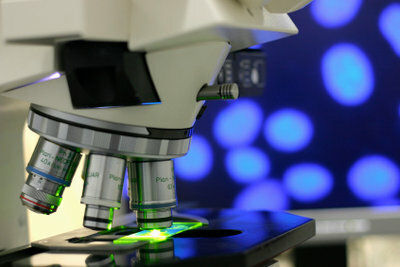How much can a light microscope magnify?
As a rule, you already have your first contact with the light microscope at school, whether in chemistry or biology class. How much you can enlarge with it depends on the lens and the eyepiece.

Structure of the light microscope
- The structure of the light microscope is from top to bottom: eyepiece, objective lens, object, condenser lens and light source.
- The light rays emitted by the light source are focused in the focal point of the lens. The focal point of a lens is the point at which the rays of light refracted by the lens cross.
- The object is in the focal plane of the condenser lens. The object must be thin enough so that it can be irradiated.
- After the light rays pass the object, they hit the objective lens, which refracts the light rays again. A mirror-inverted intermediate image of the object is created in the focal plane of the objective lens. Depending on the lens, this intermediate image can have a magnification of two to one hundred times. How much individual objective lenses magnify depends on their cut.
- The eyepiece is another lens that generates a magnification of the intermediate image generated by the objective lens. The image of the intermediate image is again mirror-inverted, so that the object as a whole is shown in the correct orientation. The magnification factor of the eyepiece is between 4x and 10x. The light rays exit the eyepiece almost parallel and are refocused in the eye.
Structure of a light microscope - explained step by step
Sometimes a magnifying glass is not enough to reveal details of an interesting object ...
How much can the light microscope magnify
- From the magnification of the objective lens from 2x to 100x and that of the eyepiece from 4x to 10x that a light microscope can theoretically produce an image of an object that is eight to 1000 times enlarged can.
- The decisive factor for a good image is not how much the lenses can enlarge, but the resolution.
- Resolution is the smallest distance between two points on the object that can still be distinguished in the illustration. At low resolution you can see two separate points as a line or blurred into each other.
- The resolution depends on the diameter of the diaphragms used and the wavelength of the light used for imaging.
How helpful do you find this article?

